Hello
Good clean drafting means more complete burning. A good clean stove is a must and cleaning should always be done first!
However for low heat levels, large fan blades work best. Large blades must be teamed with a higher rated exhaust blower for better torque needed during start up and low drafting!
The new heavy guage universal mounting hub adapts to most stoves.
Has anyone tried this?
In this old Kozi 100, we beefed up the blower and got a better livelier flame on the low heat levels!
Pic 1-3 - Remove the old OEM 1.2 amp exhaust blower
Pic 4 - Upgraded Gleason-Avery blower has 3 female ends
Pic 5 - Put 2 male and round lug ends on.
Pic 6-7 new GA 1.75 amp blower
Pic 8 - Plug in wires and tie down with wire tie
Pic 9 - ground wire to back of stove grill screw
Good clean drafting means more complete burning. A good clean stove is a must and cleaning should always be done first!
However for low heat levels, large fan blades work best. Large blades must be teamed with a higher rated exhaust blower for better torque needed during start up and low drafting!
The new heavy guage universal mounting hub adapts to most stoves.
Has anyone tried this?
In this old Kozi 100, we beefed up the blower and got a better livelier flame on the low heat levels!
Pic 1-3 - Remove the old OEM 1.2 amp exhaust blower
Pic 4 - Upgraded Gleason-Avery blower has 3 female ends
Pic 5 - Put 2 male and round lug ends on.
Pic 6-7 new GA 1.75 amp blower
Pic 8 - Plug in wires and tie down with wire tie
Pic 9 - ground wire to back of stove grill screw
Attachments
-
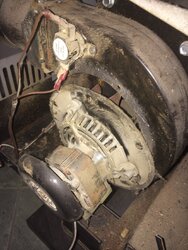 IMG_0944.JPG259.3 KB · Views: 294
IMG_0944.JPG259.3 KB · Views: 294 -
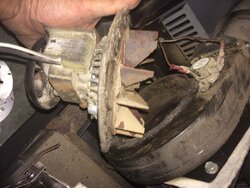 IMG_0945.JPG221.7 KB · Views: 302
IMG_0945.JPG221.7 KB · Views: 302 -
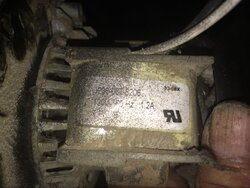 IMG_0946.JPG221.7 KB · Views: 223
IMG_0946.JPG221.7 KB · Views: 223 -
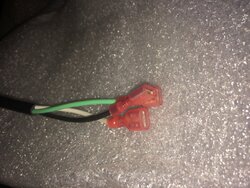 IMG_0965.JPG242.4 KB · Views: 215
IMG_0965.JPG242.4 KB · Views: 215 -
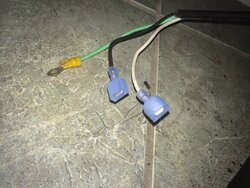 IMG_0949.JPG275.2 KB · Views: 536
IMG_0949.JPG275.2 KB · Views: 536 -
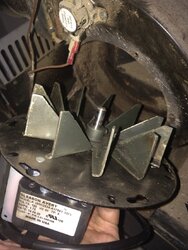 IMG_0947.JPG212.8 KB · Views: 246
IMG_0947.JPG212.8 KB · Views: 246 -
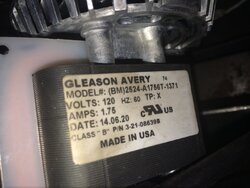 IMG_0957.JPG167.7 KB · Views: 213
IMG_0957.JPG167.7 KB · Views: 213 -
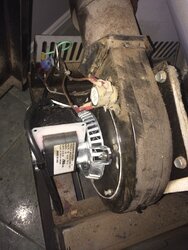 IMG_0956.JPG249.4 KB · Views: 535
IMG_0956.JPG249.4 KB · Views: 535 -
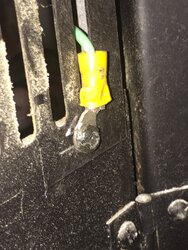 IMG_0955.JPG258.2 KB · Views: 197
IMG_0955.JPG258.2 KB · Views: 197
Last edited:

